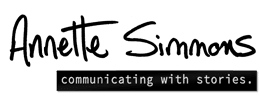<
This was drawn by a cross-functional task team in a high tech company where distrust was a big problem. Projects were way behind deadline, blame had eroded working relationships and a dangerous apathy drained employees of enthusiasm. The first two meetings with this group were frustrating – either no one was willing to speak or they flipped into a blaming tirade against management. Yet, when the group abandoned language and turned to image and metaphor, they could suddenly see several sides at the same time. Everyone laid their cards on the table.
The whole group combined their individual maps to create this picture. The CEO is sitting on a throne on top of a mountain with his hands firmly placed over his ears. The factory is way off to one side. It looks like slave’s quarters. Administrative offices are at the base of the mountain filled with “carpet people” (some groups didn’t have carpet in their office) leaning back with their feet propped up on their desks. On an island far away was a fort that housed the design engineers. Sentries were posted to keep everyone else out (and to keep engineers silly enough to want to fraternize, in). One lone HR person floats on a raft midway between the mainland and the island, without oars, vainly attempting to bring the groups together.
Obviously it required a facilitated process to handle these “dangerous truths,” but the power of these visual representations broke down barriers and opened the eyes of those who had refused to see the problems. You should have seen the face of the CEO when he saw this drawing! The metaphors shot right past his usual defenses of being angry or self-righteous and he just stood there, slack-jawed, taking it in. In a split second he saw what they saw and understood their point of view whereas months of discussions, mountains of reports and even the most articulate anonymous emails had not done the trick. The people who drew the pictures got an eyeful too. Their frustrations and anger seemed to drain into the pictures and leave them better prepared to look for solutions. They could see how they contributed to the problems as well.
The drawing exercise was a tiny piece of a larger process but it was a catalyst, nonetheless. They saw things they didn’t see before – and it changed them. The CEO started listening, the engineers dismantled their fort (parts of it, anyway) and the factory and the main office began to communicate more. Once exposed, blame either makes it’s point or gets cancelled out by the bigger picture. In the silence, many people don’t realize their “oppressors” feel like victims, too.
Incommunicado
Facebook
Twitter
LinkedIn
Email
Print
Annette Simmons
Annette Simmons has travelled internationally while working with government, business, religious, and educational organizations. Her ability to deliver practical, easily implemented solutions when groups were antagonistic or deadlocked has gained her an international reputation in group dynamics.
